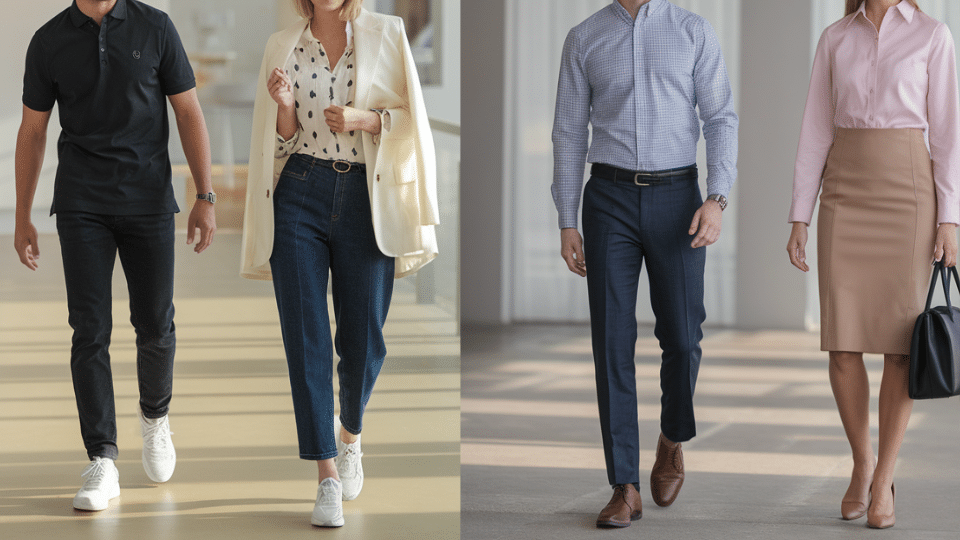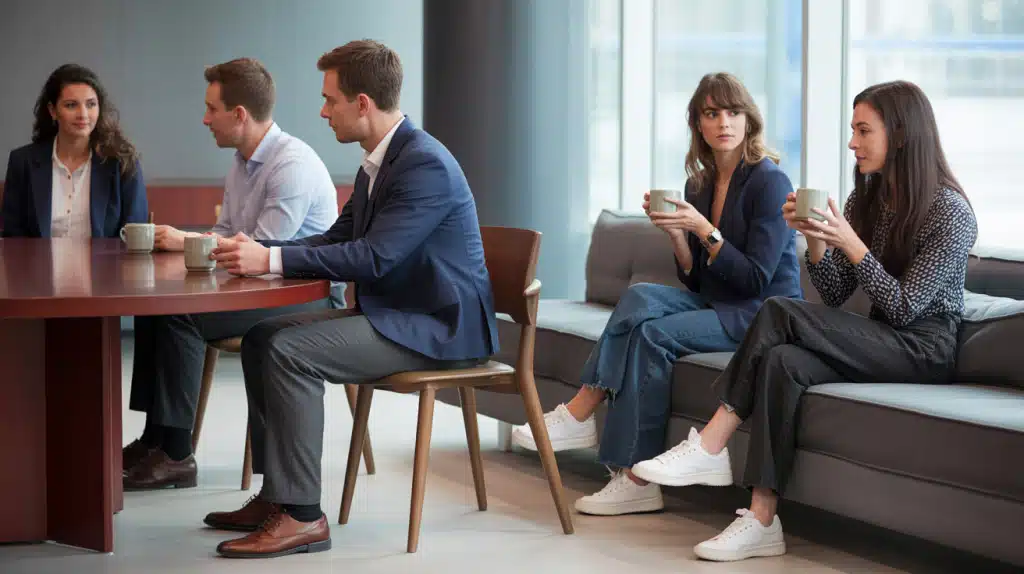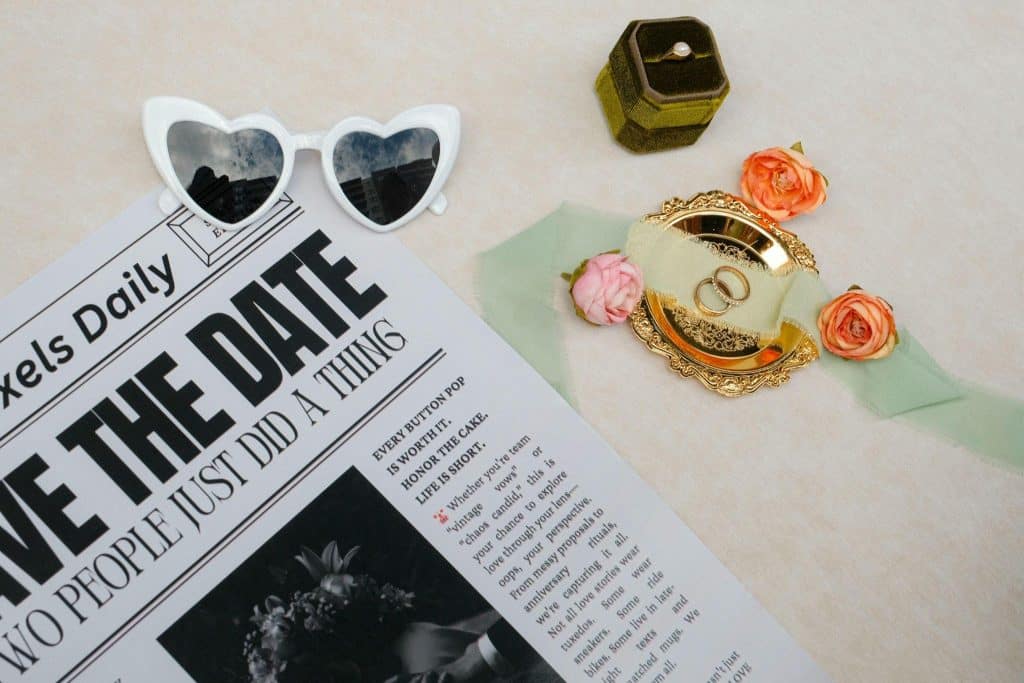Confused about what to wear?
Dressing right can be tricky. Smart casuals and business casuals might sound similar, but they’re different ways to look good.
Imagine clothes that make you feel confident and comfortable.
Some outfits work for work, while others are great for hanging out with friends. The right clothes can help you feel great and make a good impression.
In this guide, I have broken down the mysteries of smart casuals and business casuals.
I’ll help you understand each style, when to wear them, and how to look amazing no matter the occasion.
Know how to pick the perfect outfit for any situation:
What are Smart Casuals?
Smart casuals are a cool way to dress that’s not too fancy but not too relaxed. Think of it like looking nice without trying too hard.
For guys, this might mean wearing clean jeans or nice pants with a button-up shirt or a cool sweater.
Girls can wear nice pants or a cute dress with a light jacket. The big idea is to look put-together but comfortable. You want to seem like you care about how you look, but you’re not super stiff.
Good, smart casual outfits make you look stylish and confident. It’s perfect for places like a casual work meeting, a fun dinner, or hanging out with friends, where you want to look a bit special.
Colour palette: Lighter shades, patterns, and seasonal tones are welcome, just keep them balanced.
What are Business Casuals?
Business casuals are a relaxed professional dress style used in modern workplaces.
For guys, this typically involves collared shirts, khakis or dress pants, and leather shoes. Ties are optional, and jackets can be worn but aren’t required.
Girls might wear blouses, tailored slacks, knee-length skirts, or professional dresses.
The style focuses on looking neat and professional without being too stiff. You want to avoid super bright colors, tight clothes, or anything too casual, like t-shirts or shorts.
Business casual shows you’re serious about work while staying comfortable. It’s a way to look professional without wearing a full suit or super formal outfit. The goal is to appear clean, put-together, and ready for the workday.
Colour palette: Muted and darker shades work best, think navy, gray, beige, or white.
7 Key Differences Between Smart Casuals and Business Casuals

Dressing up can be confusing! Smart casuals and business casuals might look similar, but they’re actually quite different.
Here are some key points to note that will help you understand what makes each style unique:
1. Formality Level
Business casuals are serious and professional.
They’re perfect for office meetings and work events. Smart casuals are more relaxed and fun.
Think of business casuals as your serious work outfit and smart casuals as a cool, comfortable look that still looks put-together.
2. Top Clothing
Business casuals mean collared shirts and plain blouses. Smart casuals let you have more fun with your tops.
You can wear neat polos, fun blouses, or even a cool t-shirt.
Business casuals say “I’m professional,” while smart casuals say “I’m professional and stylish.”
3. Bottom Choices
Business casuals stick to plain trousers and neat skirts. Smart casuals give you more freedom – dark jeans, comfy chinos, or casual dresses are all okay.
Imagine business casual pants as super neat school clothes, and smart casual as your favorite comfortable pants that still look good.
4. Shoe Selection
Business casual shoes are always leather and traditional – think boring office shoes.
Smart casuals let you wear clean sneakers or cool suede shoes.
Your shoes in business casuals should look like they belong in an office. Smart casuals let your shoes show off your personality.
5. Workplace Suitability
Business casuals work best in traditional jobs like banks or law offices. Smart casuals are perfect for creative jobs like design, tech, or art.
If your job is super serious, go with business casuals. If your job is more relaxed, smart casuals are your friend.
6. Accessory Approach
Business casuals keep accessories super simple and small.
Smart casuals let you have fun with accessories – cool watches, interesting jewelry, or unique touches.
In business casuals, your accessories should basically disappear. In smart casuals, they should make people say “wow!”
7. Occasion Flexibility
Business casuals are great for serious work events like interviews.
Smart casuals are perfect for casual Fridays, dinner dates, or weekend events.
Business casuals scream “I’m here to work,” while smart casuals say “I’m here to look awesome and feel comfortable.”
Similarities Between Smart Casuals and Business Casuals
1. Balance of Style: Both smart casuals and business casuals share a common goal of finding a balance between being too fancy and too relaxed. The main idea is to look neat and put-together while feeling comfortable.
2. Personal Confidence: In these dress codes, the key is appearance and confidence. You want clothes that fit well and make you feel good about yourself. Neither style wants you to look sloppy or unprofessional.
3. Personal Expression: These styles allow for personal expression while maintaining a polished look. You can show a bit of your personality through your clothing choices while still looking appropriate for the setting.
4. Versatility: Both dress codes are flexible and work in many different situations. No matter if you are attending a casual work meeting or going to a nice dinner, these styles help you look respectful and stylish.
5. Modern Look: The main similarity is about balance – looking professional without being too stiff, and being comfortable without appearing careless. They represent a modern approach to dressing that values style & comfort.
What to Choose: Business Casual vs Smart Casual?
| Occasion | Business Casual | Smart Casual |
|---|---|---|
| Workplace | Office settings with a defined dress code | Casual Fridays at the office |
| Interviews | Job interviews in creative but professional industries | Not suitable for interviews |
| Meetings | Client meetings and networking events | Dinner with colleagues or friends |
| Events | Formal company presentations | Semi-formal parties and weekend gatherings |
| Special Moments | Professional events where credibility matters | Informal weddings or cocktail outings |
| Message It Sends | “I am serious about my work but approachable.” | “I value style and comfort while keeping things polished.” |
Conclusion
Your wardrobe speaks volumes about your personality, and understanding the nuances between smart casuals and business casuals can help you make confident clothing choices.
If you’re heading to work, a social event, or a casual meetup, selecting the right outfit can boost your self-assurance and make a strong first impression.
Remember, the key is finding a balance that makes you feel comfortable and look polished.
Pay attention to fit, color, and overall presentation. Practice mixing and matching pieces to create versatile looks that work well in various settings.
What’s your favorite smart casual or business casual outfit? Share in the comments below!





































